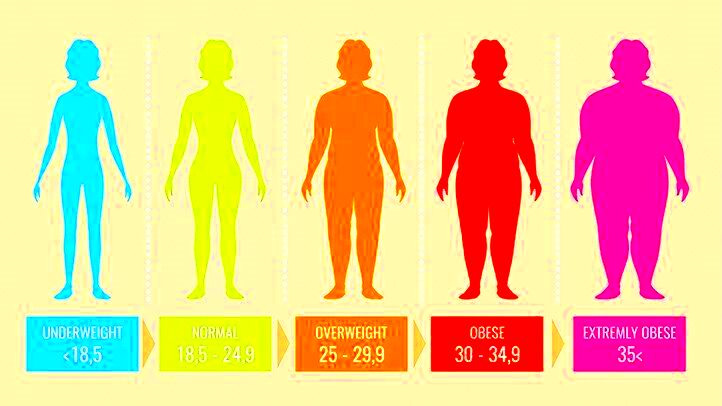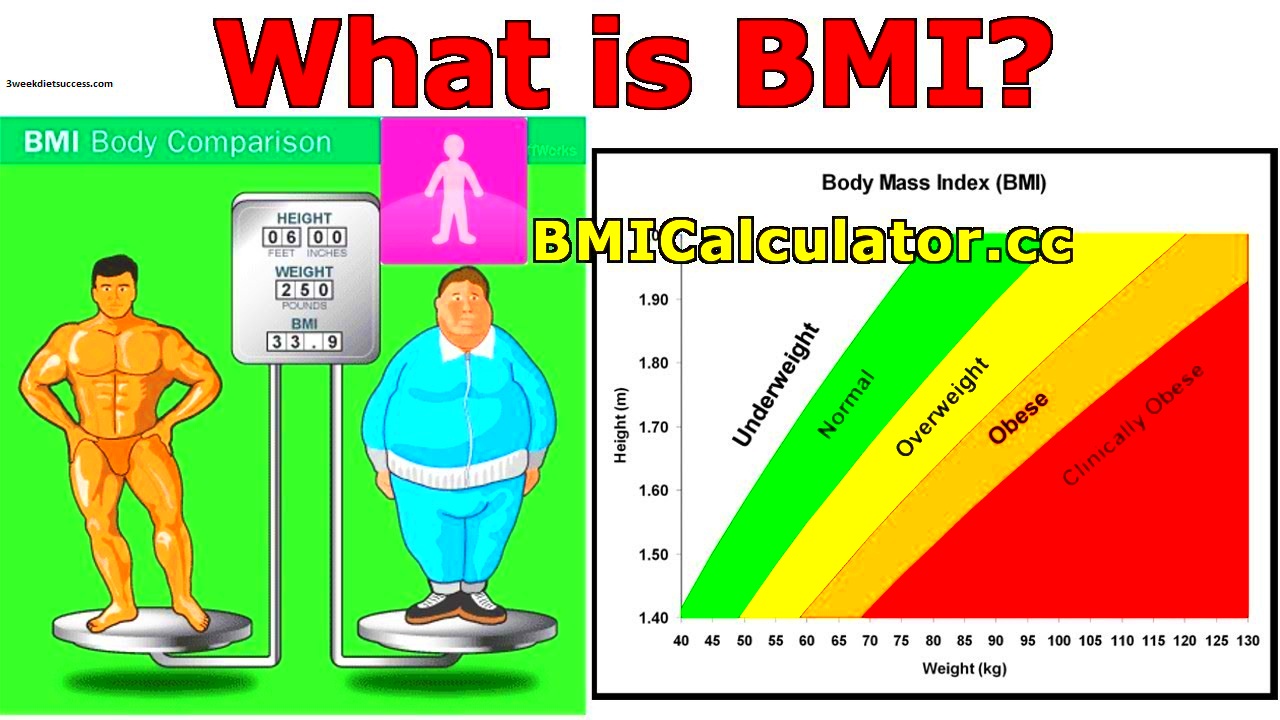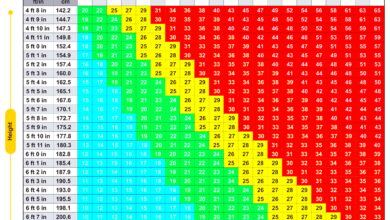Why I Believe There’s More to Health Than Just a BMI Number

In a world obsessed with figures and statistics, it’s easy to get fixated on a single number—BMI, or Body Mass Index. Growing up, I too was captivated by this simple formula, believing it held the key to my health and fitness. But over time, I realized that health is far more complex than just a number. Let me take you on a journey through my personal experiences and the valuable lessons I’ve learned along the way.
My Early Obsession with BMI

When I first encountered BMI in high school, I was enchanted. The idea that a single number could determine my health status felt almost magical. I remember meticulously calculating my BMI and comparing it to those “ideal” ranges. My weight, height, and BMI became my daily preoccupations, and my self-worth seemed to hinge on this metric.
There were countless mornings I stood on the scale, scrutinizing the numbers, only to find myself disheartened when the BMI didn’t meet the “ideal” range. My focus was always on the numbers—striving for a lower BMI without considering how it affected my overall well-being.
This obsession wasn’t just about numbers; it became a part of my identity. I often compared myself to friends and family, feeling either superior or inferior based on our BMIs. I didn’t realize then that I was missing out on a deeper understanding of health, focusing solely on a number that didn’t capture the full picture of my physical and mental state.
Health is More Than a Number

As years passed and my perspective evolved, I came to understand that health encompasses much more than just BMI. Here’s what I learned:
- Individual Variability: Everyone’s body responds differently. A number on a scale can’t account for muscle mass, bone density, or individual metabolic rates.
- Mental and Emotional Well-being: Health isn’t just physical. My constant BMI monitoring led to anxiety and a negative self-image, overshadowing the importance of mental health.
- Holistic Metrics: I started exploring other measures like body fat percentage, physical fitness levels, and how I felt daily. These gave me a more comprehensive view of my health.
- Personal Stories: Listening to others’ experiences revealed that health isn’t one-size-fits-all. Each person’s journey is unique and influenced by various factors beyond BMI.
Ultimately, my journey taught me that while BMI can offer some insights, it’s only a small piece of the puzzle. True health involves a balanced approach, considering physical, mental, and emotional well-being. It’s about finding what works best for you and embracing a more holistic view of wellness.
The Importance of Holistic Health Metrics
When I first let go of my obsession with BMI, I embarked on a journey to discover a more comprehensive view of health. Holistic health metrics provided me with a richer understanding of my well-being, beyond what a single number could offer. Here’s why these metrics matter:
- Body Composition: Unlike BMI, which only considers weight and height, body composition takes into account fat mass, muscle mass, and bone density. For instance, someone with high muscle mass might have a higher weight but a lower body fat percentage, making BMI an incomplete measure.
- Fitness Levels: Regular physical activity and endurance are crucial indicators of health. Tracking improvements in strength, flexibility, and cardiovascular fitness offers a more nuanced picture of overall wellness.
- Energy and Vitality: How energetic and vibrant you feel daily is a vital indicator. I found that when I focused on eating nutritious foods and exercising regularly, my energy levels soared, which was a better indicator of my health than any BMI number.
- Mental Health: Mental well-being significantly impacts physical health. Incorporating stress levels, sleep quality, and emotional state into your health assessment can reveal insights that BMI simply can’t.
Adopting a holistic approach allowed me to appreciate my body’s unique needs and strengths. By considering a range of factors, I gained a fuller picture of my health and started to feel more in tune with my body.
Different Bodies, Different Stories
One of the most eye-opening experiences was hearing real-life stories from friends and family, each with their unique health journeys. These stories revealed how different bodies require different approaches. Here are a few examples:
- Aunt Anjali’s Strength: Despite having a BMI classified as overweight, my aunt was incredibly fit and active. Her high muscle mass skewed her BMI, but her strength and endurance spoke volumes about her health.
- Rahul’s Transformation: Rahul, a friend from college, struggled with a low BMI due to his fast metabolism. No matter how much he ate, his weight didn’t increase. His health was in good shape, but his BMI didn’t reflect his true physical status.
- Priya’s Balanced Life: Priya, who once fixated on her BMI, shifted focus to overall wellness. She embraced mindfulness, regular exercise, and balanced nutrition. Her well-being improved dramatically, though her BMI remained unchanged.
These stories highlight that health isn’t dictated by BMI alone. Each person’s body tells a different story, and embracing this diversity is crucial for understanding true wellness.
Challenges of Relying Solely on BMI
While BMI is a widely used metric, relying solely on it can be problematic. Here’s a look at some of the challenges I faced:
- Lack of Context: BMI doesn’t differentiate between muscle and fat. I recall a period when my BMI suggested I was overweight, but my body fat percentage was healthy. This discrepancy made me question the accuracy of relying solely on BMI.
- Misleading for Certain Groups: For athletes or those with higher muscle mass, BMI can misrepresent health. I personally saw friends who, despite being muscular and fit, had high BMI numbers, which didn’t reflect their true health status.
- Not Considering Lifestyle Factors: BMI overlooks crucial lifestyle elements such as diet quality, physical activity, and stress levels. My experiences showed that a balanced diet and regular exercise had a more significant impact on my well-being than a single number.
- Emotional Impact: Obsessing over BMI can lead to stress and negative self-image. I struggled with self-esteem issues when my BMI didn’t meet “ideal” standards, which overshadowed my overall health and happiness.
Recognizing these challenges helped me move beyond BMI and embrace a more holistic approach to health, focusing on what truly matters—feeling good and living a balanced life.
Alternative Measures of Health
As I moved beyond my fixation on BMI, I discovered several alternative health measures that offered a fuller picture of well-being. These metrics not only complement BMI but often provide insights that it misses. Here are some key alternatives:
- Body Fat Percentage: Unlike BMI, body fat percentage measures the proportion of fat in your body compared to lean mass. I started tracking this and found it much more revealing of my true fitness level. For instance, while my BMI might suggest I was overweight, my body fat percentage was in the healthy range.
- Waist-to-Hip Ratio: This ratio helps assess fat distribution. A higher ratio can indicate higher risk for heart disease. Measuring my waist and hips, I found this metric particularly useful in understanding my risk factors.
- Metabolic Health: Tracking blood sugar levels, cholesterol, and blood pressure gives a clearer picture of how well your body is functioning. Regular check-ups revealed my metabolic health to be in good shape, despite a BMI that suggested otherwise.
- Physical Fitness Tests: Tests like VO2 max (maximum oxygen uptake), flexibility, and strength assessments provide valuable insights. I noticed that my improved stamina and strength were better indicators of my health than a mere number on the scale.
By incorporating these measures, I gained a more nuanced understanding of my health and discovered that wellness is multi-faceted. These metrics helped me appreciate the broader aspects of health beyond just weight.
How to Develop a Balanced Approach to Wellness
Developing a balanced approach to wellness involves integrating various aspects of health into your daily routine. Here’s how I found a more harmonious and effective way to maintain well-being:
- Prioritize a Balanced Diet: Focus on a variety of nutrients rather than just calorie counting. I switched to a diet rich in fruits, vegetables, whole grains, and proteins, which made a significant difference in my overall health.
- Incorporate Regular Exercise: Mix cardiovascular workouts, strength training, and flexibility exercises. Finding activities I enjoyed, like yoga and cycling, made it easier to stay consistent and motivated.
- Focus on Mental Health: Don’t ignore the importance of mental well-being. Practices like meditation, journaling, and spending quality time with loved ones helped me manage stress and improve my mood.
- Monitor Health Indicators: Regularly check your blood pressure, cholesterol, and other vital signs. These indicators, combined with fitness metrics, offer a comprehensive view of your health.
- Listen to Your Body: Pay attention to how you feel physically and emotionally. I learned to trust my body’s signals, recognizing when to rest or adjust my routine based on how I felt.
By embracing these practices, I developed a balanced approach to wellness that considers both physical and mental health, making my journey toward better health more enjoyable and sustainable.
FAQ
1. What are some common alternatives to BMI for assessing health?
Some common alternatives include body fat percentage, waist-to-hip ratio, metabolic health indicators (like blood sugar and cholesterol), and physical fitness tests.
2. How can I measure body fat percentage at home?
You can use body fat scales or calipers. Many smart scales provide body fat percentage measurements, or you can use calipers to measure skinfold thickness, although this may require some practice.
3. Why is the waist-to-hip ratio important?
The waist-to-hip ratio helps assess fat distribution, which can be an indicator of health risks such as heart disease. It is often considered a better measure of health risks related to obesity compared to BMI.
4. How can I integrate mental health into my wellness routine?
Incorporate activities that promote relaxation and happiness, such as meditation, mindfulness, and spending time with loved ones. Regular self-care and stress management techniques can significantly enhance your overall well-being.
5. How often should I check my health indicators?
It’s a good practice to monitor key indicators like blood pressure and cholesterol levels at least once a year during regular health check-ups. For more frequent updates, consult with your healthcare provider based on your individual health needs.
Conclusion
Reflecting on my journey away from the narrow focus on BMI, I’ve come to appreciate the richness of a more holistic view of health. Initially, it was challenging to let go of the number that seemed so definitive. But exploring alternative health metrics and listening to diverse personal stories revealed a more comprehensive picture of well-being.




